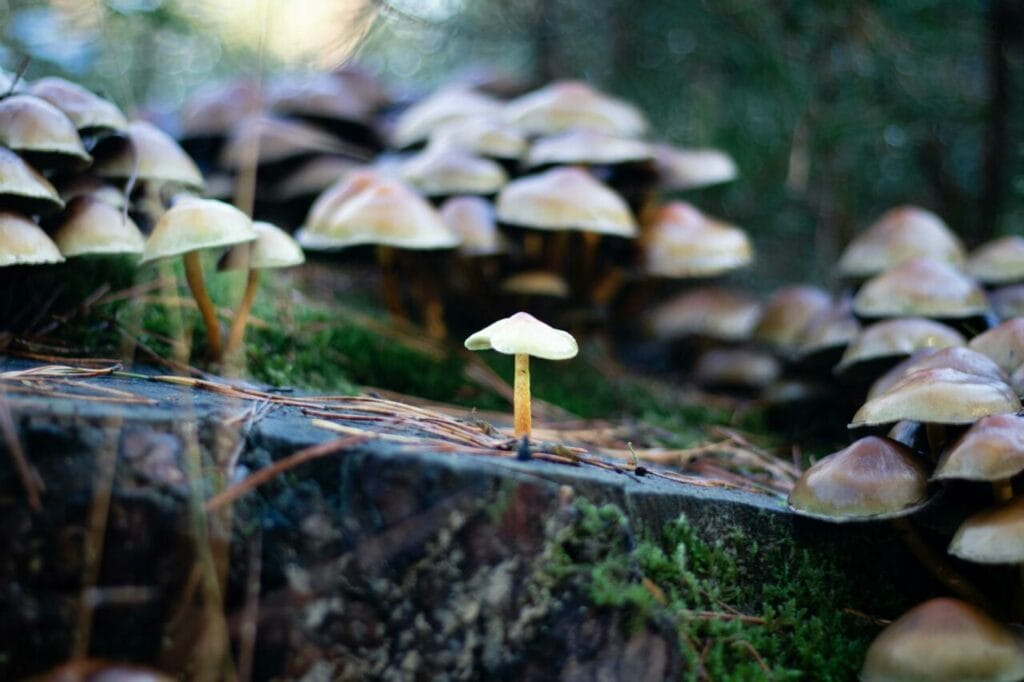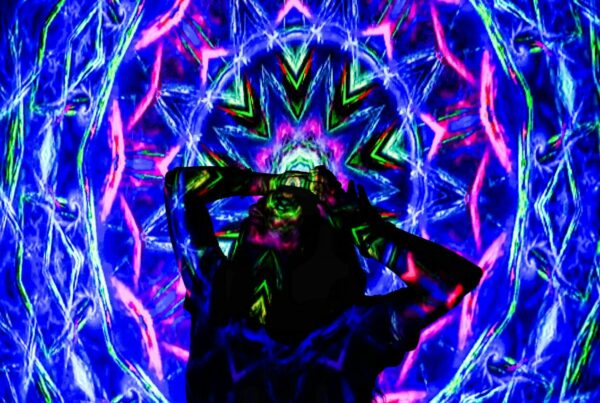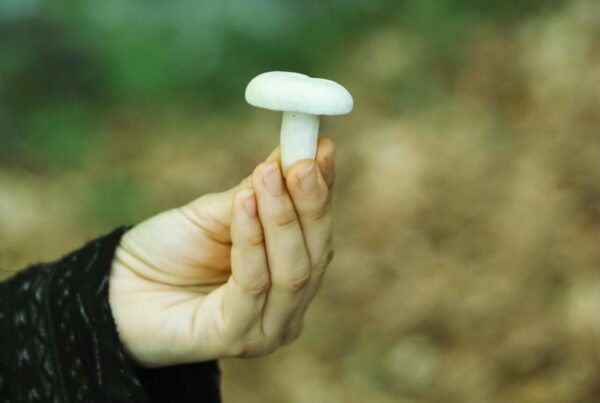Alzheimer’s Disease (AD) is a crippling neurodegenerative condition for which no known cure exists. The increasing prevalence of this disorder represents a significant challenge. In response, scientists are investigating enhanced treatment approaches, focusing on both natural and synthetic options.
Various clinical trials highlight the potential of serotonergic psychedelics like LSD, DMT, and psilocybin, in the treatment of Alzheimer’s disease. For more intriguing information, feel free to explore online resources or consider “purchasing psychedelics online in Canada.”
[toc]
The Influence of Psychedelics on Alzheimer’s Treatment
Traditional psychedelics demonstrate the potential to treat early-stage Alzheimer’s Disease (AD) or mild cognitive impairment (MCI) by stimulating the growth of neurons.
Psychedelics could facilitate neural plasticity for learning and memory by targeting specific brain receptors. This might potentially slow or even reverse the neurodegenerative effects of AD. Additionally, psychedelics might reduce depression and anxiety, common among AD patients, by inducing positive psychological impacts.
There are ongoing debates concerning how psychedelic treatments function. Some believe that profound impacts from high-dose psychedelics, such as mystical experiences or a sense of self-dissolution, are essential for achieving psychological benefits. Others suggest that the key lies within the biological changes triggered by these substances. Both viewpoints may have merit.
Traditional psychedelics appear to aid the brain in adjusting and reducing inflammation, even at lower doses. Therefore, low-dose treatments could potentially improve conditions like brain degeneration or migraines without significant mind-altering effects. However, for conditions like depression, anxiety, or addiction, the mind-altering effects seem to be essential, encouraging introspection and behavioral changes. Consequently, both low and high doses deserve further investigation for personalized therapy.
The Impacts of Serotonergic Psychedelics
There’s a growing interest in serotonergic psychedelics, including LSD (lysergic acid diethylamide), DMT (dimethyltryptamine), and psilocybin (found in magic mushrooms), in the field of neuroscience.
Psychedelics are attracting heightened attention due to the potential therapeutic effects they might have on various mental health disorders.
Experts believe that serotonin receptors, renowned for boosting cognition and regulating neuroplasticity, offer a promising avenue for research into Alzheimer’s Disease (AD).
These compounds primarily exert their pharmacological effects by modifying the serotonin system in the brain, resulting in changes in perception, mood, and consciousness. The following points summarise research findings that back up this theory:
- Specifically, the 5-HT2A subtype of these receptors affects the gene expression of neurotrophins that enhance neuroplasticity in brain areas impacted by AD.
- These receptors help regulate cortical signalling, which is vital for cognition, memory, and synaptic plasticity.
- Despite their atypical distribution within neurons, serotonin receptors play an essential role in neural development, regeneration, and plasticity.
Significant Research Findings
- Research has shown that serotonergic psychedelics could potentially alleviate some aspects of AD pathology by promoting neuroplasticity.
- Classic psychedelics have been found to affect neurotransmission, facilitate synaptic remodelling, and increase factors that support neuronal survival.
- Specific psychedelics, such as muscimol and Sig-1R agonists, may help reduce the neurotoxicity associated with AD progression.
- Classic psychedelics have been shown to stimulate pathways in brain regions impacted by AD, suggesting they may slow down or even reverse brain degeneration.
- Psilocybin mushrooms have been found to stimulate neural plasticity, encouraging neurogenesis and inducing lasting changes in brain circuits.
- Psychedelics have been shown to improve brain connectivity by targeting receptor genes and initiating changes in neurons and networks.
Clinical research suggests that both classic and non-classic psychedelics from magic mushrooms influence several biological processes in the brain. These effects encompass rapid changes in gene expression and significant alterations in brain structure and function.
By interacting with receptors like serotonin, sigma, NMDA, and GABA, these psychedelics can enhance synaptic plasticity and rejuvenate the brain. Therefore, psychedelics might have a positive impact on behaviour, memory, and cognition, presenting them as potentially promising treatments for AD and related disorders.
Buy Psychedelics Online in Canada
Welcome to our online store, your trusted source for a wide selection of psychedelic products in British Columbia, Canada. If you’re considering the microdosing of magic mushrooms, we’re a reputable medicinal mushroom dispensary that can guide you in your journey.
- LSD
LSD, a man-made drug, is derived from ergot, a type of fungus that grows on rye grains. Even in small amounts, this psychoactive substance can alter your perceptions, emotions, and thoughts.
Excessive use of LSD may lead to strong hallucinations, warping your sense of time and space. Please be careful, as substances sold as LSD might actually be different drugs, such as NBOMe or a member of the 2C drug family.
| Product | Kittease – Ketamine Microdose Troche (30x50mg) | Zenly – LSD Gel Tabs – 600ug (100ug Per Tab) | Zenly – LSD Gummies – Sour Zen Berry – 200ug (100ug Per Gummy) |
| Purpose | Stress, depression, pain management, PTSD, OCD, work stress, performance anxiety, insomnia, and addiction. | Unique experiences | Unique experiences |
| Dosage | 50mg per troche / 30 per pack – 1.5 grams of ketamine per pack | 600ug total/6 Tabs (100ug/Tab) | 200ug total/2 Gummies (100ug/Gummy) |
| Usage Instructions | Consume one full troche | Take one full tab for the full effect. Wait a minimum of 2 hours before taking another. | Consume one full gummy for the full effect. Wait a minimum of 2 hours before taking another. |
| Benefits | Offers fast action with minimal risk, enhances receptivity, ideal for self-reflection and cognitive improvement. | Perfectly measured dose for the optimal trip, lab-verified | Perfectly measured dose for the optimal trip, lab-verified |
- Magic Mushrooms
Over 180 species of mushrooms are known to contain psilocybin and psilocin, compounds that are acknowledged for their therapeutic effects and beneficial impact on mental health.
The effects may vary depending on the type of mushroom, the specific cultivation batch, the amount consumed, and the individual’s tolerance. Some people opt for microdosing to experience mild effects, while others consume larger amounts for a more intense experience. The quality can also differ based on the cultivation techniques used.
The Blue Meanies, known in scientific terms as Panaeolus cyanescens, are small dried mushrooms that flourish in warm tropical climates, usually on dung from cows and water buffaloes. As they grow, they develop blue spots on their surface, giving them their name.
- These mushrooms have a high concentration of psilocybin and psilocin.
- They have been historically used recreationally, especially by the people of Bali, who consume them during celebrations and for artistic inspiration.
- They are popular among tourists and travelers in Bali and similar destinations for their hallucinogenic properties. These effects can include feelings of euphoria, hallucinations, happiness, and intense laughter.
- DMT
DMT, a potent hallucinogenic substance, is present in certain plants such as Psychotria viridis and Chacruna. Often referred to as the “spirit molecule,” these controlled substances can trigger deep psychedelic experiences. They offer a short but intensely immersive journey characterized by vivid visual and auditory hallucinations.
| Product | Dream Machine – Vape Cartridge – DMT 1ml | Integral Alchemist – ACACIA Changa Pre-Roll | Integral Alchemist – Mimosa- 1ml DMT Vape Cart |
| Description | Explore hyperdimensional realms with DMT. | Enjoy effects similar to ayahuasca with this blend of herbs and DMT. | Start a journey of mystical visions and spiritual insights with DMT. |
| DMT Content | 1g | Approximately 90mg | 1ml |
| Instructions | Preheat the cartridge and inhale | Enjoy the pre-roll at a pace that suits you. | For immediate effects, inhale the vapor. |
| Effects | Intense hallucinations, altered consciousness. | Visual psychedelic experience, prolonged duration. | Spiritual awakening, euphoria, significant changes in perspective. |
| Duration | Varies from person to person | Approximately 1 hour | About 30 minutes |
Long-Term Impact of Psychedelic Use
Present studies are exploring the long-term consequences of consuming psychoactive substances. The phrase “long-term effects” is used to describe any lasting changes in cognition, emotion, or memory that occur after extended use of psychedelics.
The study of long-lasting effects of psychedelics is complex. Some research suggests potential mental health benefits, while others point towards potential risks like the onset of psychosis.
Despite the complexities, researchers continuously strive to understand the long-term mental health implications of psychedelic use. They carry out thorough research and track individuals over extended periods to gather more accurate data.
Purchase Cannabis from a Verified Vendor
Research indicates a significant shift in Alzheimer’s disease treatment, proposing that psychedelics could radically alter our approach to brain disorders. Experts suggest that the therapeutic use of these substances could entirely revolutionize Alzheimer’s treatment, providing renewed hope for numerous patients and their families.
For premium-quality products, opt for a verified vendor like Shrooms For Sale Canada. Offering a wide range of cannabis products, including flowers, edibles, concentrates, and more, Shrooms For Sale Canada assures genuine, lab-tested items that adhere to strict food and drug standards.
Place your order for shrooms online today.
Frequently Asked Questions
How do psychedelics differ from other substances typically used in Alzheimer’s treatments?
Psychedelics distinguish themselves from traditional Alzheimer’s medications in terms of their therapeutic strategy and effects. They induce new neural connections by influencing the brain’s serotonin system, leading to profound psychological experiences that foster emotional wellbeing.
Unlike typical drugs that predominantly manage symptoms, psychedelics are being assessed by Health Canada for their lasting benefits and comprehensive treatment approach, which includes therapy.
Research into the use
Psilocybin’s potential in treating conditions like obsessive-compulsive disorder coupled with its safety profile, particularly in preventing multi-system organ failure, distinguishes it from conventional controlled substances.
Can psychedelic-assisted therapy be an effective treatment for end-of-life distress in Alzheimer’s patients?
Psychedelic-assisted therapy could offer substantial benefits for Alzheimer’s patients confronting serious illness and imminent end-of-life realities.
- It offers emotional respite. This therapy method has demonstrated potential in reducing feelings of anxiety and sadness, especially in severely ill individuals. It may also benefit Alzheimer’s patients.
- Safe under professional supervision. Administered in a secure setting and under the watchful eye of a trained therapist, psychedelics are generally harmless and well-received by most people.
- Possible enhancement of life quality. For an individual with Alzheimer’s, an emotional uplift could make a significant difference, even without an improvement in memory-related issues.
- Further research is required. Although promising, more studies are needed to verify the safety and effectiveness of this therapy for Alzheimer’s patients, especially those in the latter stages of the disease.
What does a psychedelic therapy session for Alzheimer’s patients entail?
- Preparation Phase. This stage involves one or two sessions, each around 1 to 2 hours. These sessions aim to prepare the patient for the upcoming experience, establish expectations, and build rapport with the therapist.
- Principal Psychedelic Session. This critical session, where the patient takes the psychedelic substance, lasts roughly 4 to 6 hours. The patient spends this time in a controlled environment, typically lying down with eye shades on and listening to music, under the therapists’ careful supervision.
- Integration Phase. After the session, follow-up discussions are held to help the patient process and integrate their experience. These meetings typically last 1 to 2 hours each, with the number of sessions varying.
You might also find the following interesting:





